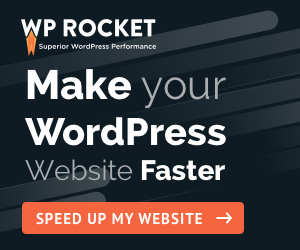We all know by now that a website plays a pivotal role in our business. A website increases your online presence, establishes credibility, and helps businesses improve their overall marketing efforts. But what do you do when your website isn’t driving the traffic you thought it would?
Some business owners create their website, excited about the opportunities to come without thorough planning. Unfortunately, these websites don’t always pan out the way we hope. The good news is, getting your website back on track so that you can attract the clients you need is within your reach. Here are five signs your website isn’t working and how to fix them.
1. Slow Load Time
Each second matters when it comes to your website. You only get a few seconds to capture a visitor’s attention before they decide to move on. A slow-loading website can be frustrating for visitors and ruin the user experience. Potential customers don’t want to come to your website looking for information and realize they can’t get access to it.
In a time where consumers have options at their fingertips, a slow-loading website is unacceptable. Websites that load quickly, ideally within 2-5 seconds, experience more page views, conversions, and customer satisfaction.
To understand how to improve your website load time, it’s time to look at what could be causing your website to load slowly in the first place. Unfortunately, there are a lot of things that can contribute to a slow-loading website. Extra-large images with complex files, text graphics, too many plugins, and unnecessary redirects are among some of the issues. Regardless of the issue, business owners can easily speed up their website with a little time, love, and care.
One of the first things you can do to speed up your website is checking your website with Google’s PageSpeed Insights. Addressing issues found by Google will improve both your user’s experience and your Google ranking. Additionally, it’s best to minimize redirects to reduce the time it takes for your website to load up.
2. Your Website is Dated
How you present your business is more important now than ever before. An outdated website sends a bad signal to potential customers. They may think you don’t care about your business if you don’t take the time to keep your site current. Additionally, an outdated website leads to questionable products or services. So, even if you manage to bring people to your website, they won’t stay for long if your credibility is threatened. Ultimately, this leaves the door open for competition to swoop in and take your potential customers from you.
Getting your website up-to-date means paying attention to things such as design, navigation, and responsiveness. Businesses should focus on keeping their design simple, clean, and organized. Additionally, the design should align with your brand.
Navigation is also important. You want visitors to seamlessly navigate your website to find the information they’re looking for. Along with this, ensuring your website is responsive for all users is essential. This means making your website optimized for mobile use.
If you’re stuck on how to update your website, hiring a web designer is a great route to go. Web designers not only develop a beautiful website for you and visitors to enjoy, but they also focus on important factors such as optimization to ensure your website can be seen by your audience.
3. Navigating your Website is Difficult
So you’ve created your website and put all the bells and whistles on it only to realize that navigating your website isn’t as easy as you thought. You find that you need to go from tab to tab just to finally land on the service page. We’ve all done it before. It’s so easy to want to add so much information to your site that you feel is relevant to give users the best experience possible. However, including all of that additional information is doing quite the opposite.
Businesses that have irrelevant links, navigation that only support large screens, and text labels in the navigation bar that are too much to process, all contribute to poor navigation. Additionally, having too many submenus and links that don’t differentiate from the text all play a role as well.
Improving your website’s navigation means ensuring that your website is easy to use. This means minimizing the use of submenus, making sure that hypertext is clearly visible to the user so they know what to click on, and ensure that all relevant tabs are accessible. Additionally, this is the time for business owners to prioritize the most useful information for visitors as a way to minimize clutter on the site.
4. Your Website isn’t Optimized for Mobile
Mobile optimization is a must. With up to 70% of web traffic happening on a mobile device, this is one of the best ways to attract potential customers to your site. If your website isn’t optimized for mobile, you’re missing out on a large portion of potential customers. A mobile-optimized site brings better engagement, reduces your bounce rate, and increases conversions.
The best way to check and see if your website is mobile-ready is by using Google’s Mobile-Friendly Testing Tool. Test results include a screenshot of how the page looks to Google on a mobile device, as well as a list of any mobile usability problems that it finds. Check for things such as how easy your content is to read, the navigation experience, and whether it provides an overall good user experience.
If you know your website isn’t optimized for mobile use, you need to start thinking in the mind of mobile-users. Less is more when it comes to mobile. With that said, it’s important that you cut down on information and content to keep things more focused. Additionally, make sure that your site’s theme is responsive. Some layouts are just not effectively designed for mobile use, which means you have to change it. Moreover, redesigning your website’s pop-ups for mobile users will ensure that your call-to-actions are reaching your entire audience.
5. Your Site Doesn’t Rank on Google
No one wants to create a website only for it to never be seen by anyone. Ranking on Google is how you get your business noticed by potential customers. Essentially, a high rank on Google means that you are visible on the internet. With that said, it’s not even just that you want to rank high but that you want to be on the first page of Google because the first page gets about 91.5% of search traffic.
You can increase your Google ranking by performing a technical SEO Audit. Google’s algorithm incorporates hundreds of signals plus machine learning to determine search rankings. An SEO Audit will help you determine areas of your website’s SEO that need to be improved. Additionally, monitoring things such as your image file size and browser caching to improve site speed is going to win points with Google.
Businesses should also give some attention to links. If you have any broken links, fix them. Also, businesses should turn any website mentions into links. You can set a Google Alert so that you can keep track of when you’re mentioned across the web.
Your website is the foundation of your business. If your website isn’t bringing in traffic like you thought it would, don’t panic. Many business owners have websites that aren’t functioning at an optimal level because they don’t understand what’s actually wrong. However, taking the time to understand the signs of a faulty website and knowing what to do to fix them will help you get back on track. Businesses should continuously monitor their website and make any necessary improvements along the way for the best website performance.




